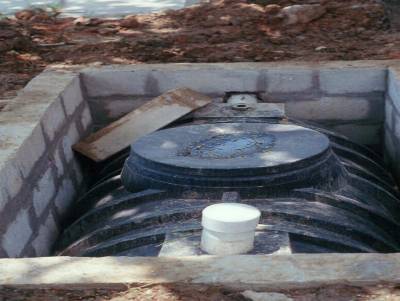Two out of every five septic tanks in Galway county are faulty according to a new report published by the Environmental Protection Agency.
Ireland’s local authorities are required to inspect domestic waste water treatment systems, of which 90% are septic tanks, under the EPA’s National Inspection Plan.
Galway County Council carried out inspections on 192 DWWTS in the period of 2017 – 2018, finding that 39% failed to meet standards.
Galway city reported the lowest failure rate of any council in Ireland in the latest inspections, with 0% of inspected DWWTS failing.
But the city council only carried out inspections on two systems in 2017 – 2018, also the lowest required amount in the country.
Urban areas in general only inspected a small number of systems with South Dublin carrying out four inspections and Dún Laoghaire Rathdown also carrying out two, though the council was required to inspect seven.
Galway city also had the lowest rate of repairs done to septic tanks which failed between 2013 – 2018 with just 20% of broken systems fixed.
The repair rate in Galway county for systems that were found faulty in the same period was 49%, the fifth lowest in the country.
Faulty septic tanks can lead to untreated waste water leaching into the surrounding soil or potentially contaminating groundwater.
A serious concern about septic tank pollution is that there are roughly 165,000 households in Ireland that have both a domestic waste water treatment system and a well.
This can expose household water supplies to contamination from bacteria and waste water that poses a particular risk to infants and elderly people.
Poorly treated sewage may also contain excessive amounts of phosphorus and nitrogen which can pollute rivers, lakes and coastal waters.
Commenting on the report, Dr. Tom Ryan, Director of the EPA’s Office of Environmental Enforcement said, “If you do not maintain your septic tank, it can contaminate your own or your neighbour’s well or your local stream, putting your health at risk and that of your family and neighbours.”
He added that “You can take simple steps to maintain your septic tank by making sure it is not leaking, ponding or discharging to ditches and by cleaning it out regularly.”
In total the EPA reviewed over 2,000 inspections carried out by local authorities on water water treatment systems and found that nearly half failed to meet standards.
The high rate of failures was mainly due to construction defects and householders not cleaning/maintaining their system.
Overall nearly one third of systems which were found to be defective between 2013 – 2018 still have not been fixed according to the EPA.
Noel Byrne, Senior Scientist in the EPA’s Office of Environmental Enforcement, said that it is important that householders fix issues once they have been detected.
“To improve water quality, the government’s proposed expanded septic tank grant scheme, due to be launched later this year, will increase the maximum grant aid available to €5000 and remove the means test requirements.”
The current National Inspection Plan for domestic waste water treatment systems covers the period from 2018-2021.
Under the plan, local authorities are required to undertake a minimum of 1,000 inspections each year, distributed by risk across the country.













